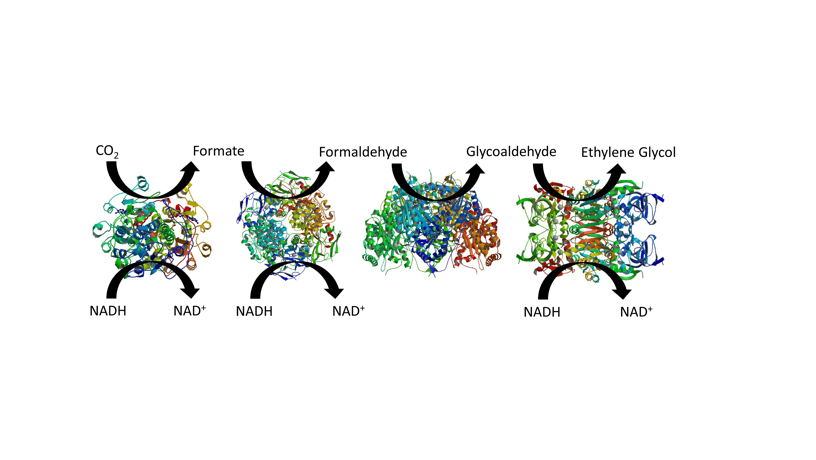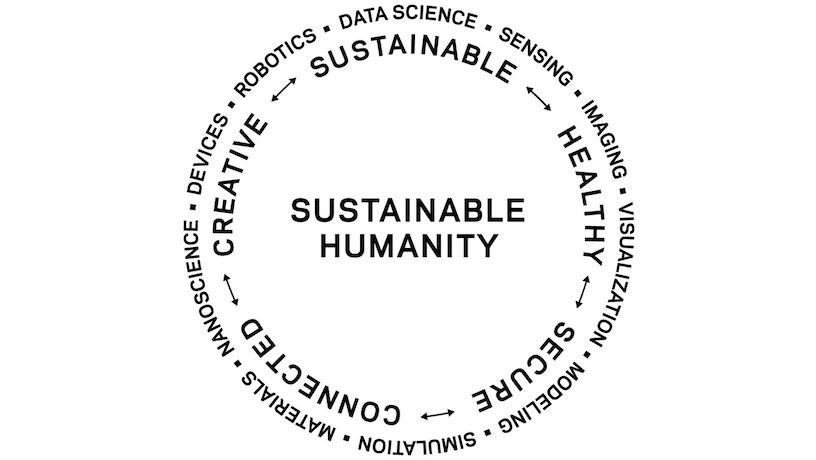Harnessing Biology to Create Cleaner Energy
Imagine a world where engineers can mimic nature’s evolutionary process at the molecular level to create more sustainable fuels

Banta with students Ipek Simay Gokulu (left) and Yuta Inaba (right) in his lab.

Schematic of a synthetic pathway for CO2 conversion to ethylene glycol.

“Evolution is the most powerful design process that we know of,” says Scott Banta, professor of chemical engineering.
He has focused his career on the building blocks of life, studying how cells take energy from their environment and turn it into useful products. Following nature’s ability to select desired traits from a process of mutations, Banta engineers the energy networks within bacterial cells—redesigning pathways, molecules, enzymes, and the cofactors that assist them—to address challenges in medicine, manufacturing, and our pressing need for sustainable energy solutions.
For Banta, the cell itself is a power plant. He has worked with the NYSERDA Advanced Clean Energy Exploratory Research Program in the promising area of electrofuels, a class of biofuels utilizing stored electrical energy from renewable sources such as solar or wind power. Such technology bypasses the need for the land-hungry, crop-based feedstocks used in conventional biofuels.
In collaboration with the City College of New York, Banta and his team re-envisioned the energy transduction mechanism in a cell with the use of computationally-designed proteins and cofactor networks within it. In these redesigned cells, a process like photosynthesis could be achieved with light energy delivered by LEDs at a specific wavelength; solar panels could power the lights themselves.
“We can get more energy using a solar panel than we can from planted corn,” he says. “It’s still using light to transfer the energy, but in a more efficient way.”
The team is also designing a network in the cells to fix carbon dioxide into a fuel for potential use in renewable diesel blends.
Banta frequently collaborates with fellow chemical engineer Alan West, Samuel Ruben-Peter G. Viele Professor of Electrochemistry and professor of earth and environmental engineering. The two scientists recently explored how the bacterium A. ferrooxidans could be exploited for its corrosive capabilities to extract valuable materials from e-waste and metal waste; the energy could then be used to produce biofuels.
“What we’re trying to do is extend what biology can do,” Banta says. “Can we expand the cell’s native energy infrastructure and make things that are fundamentally different or better?”
